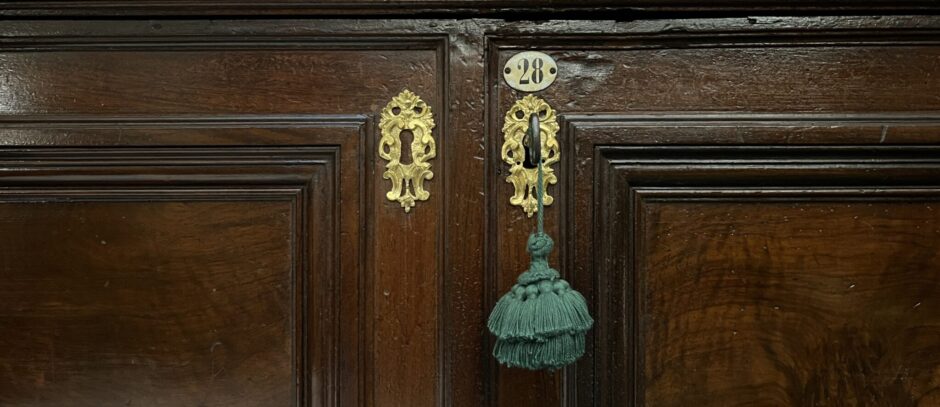From the Minneapolis STrib comes this.
The featured cleric, Fr. Michael Tegeder, pastor of St. Edward’s in Bloomington, MN, has been a source of dissent in the Archdiocese of St. Paul and Minneapolis for years. We have seen him here (Tegeder asked people not to fight FOCA, contrary to the message of Archbp. Nienstedt), here (Tegeder criticized the Archbishop’s comments in USAToday), and here (Tegeder, with the help of NCR, defends of homosexual marriage and attacks Archbishop Nienstedt’s defense of the sanctity of marriage).
Here is a preamble to this story. Redemptionis Sacramentum from the CDWDS says:
[64.] The homily, which is given in the course of the celebration of Holy Mass and is a part of the Liturgy itself, “should ordinarily be given by the Priest celebrant himself. He may entrust it to a concelebrating Priest or occasionally, according to circumstances, to a Deacon, but never to a layperson. In particular cases and for a just cause, the homily may even be given by a Bishop or a Priest who is present at the celebration but cannot concelebrate”.
So, now in the STrib we read (my emphases and comments):
Twin Cities archdiocese critical of lay preaching at Bloomington church
Posted by Rose French
At a recent Sunday Mass at St. Edward Catholic church in Bloomington, a woman stepped up to the podium on the altar — and started to preach. [Lay people, male or female, cannot preach at Mass.]
For at least one parishioner, the act of a female lay person (albeit with a master’s degree in theology from St. Paul seminary) [Well… that would be a treat.] addressing the congregation during the homily portion of the worship service was too out of bounds.
So the parishioner contacted the Archdiocese of St. Paul and Minneapolis after the Jan. 23 service. And not long after, the Rev. Peter Laird, the archdiocese vicar general, spoke to St. Edward’s pastor, the Rev. Mike Tegeder, about the situation.
According to Tegeder, Laird said it was not appropriate for a lay person to preach during the homily, the part of the Mass when priests or deacons usually reflect on the Gospel and scripture. Tegeder said Laird indicated it was only OK for lay people to preach or make comments after Holy Communion, near the end of Mass. [I would say comments, but not preaching.]
[And now…] Tegeder, however, stands by his move to allow the woman to address the congregation about the issue of adult faith formation at St. Edward, an area she’s in charge of leading at the church — one of the largest in the Twin Cities with nearly 6,400 members. [Perhaps they need some new leadership.]
Tegeder maintains lay parishioners have many skills and gifts to offer churches and their talents should not be wasted. [Who will disagree with that. But there are appropriate ways and inappropriate ways.]
“She probably is more competent than most priests when it comes to putting together a good message,” said Tegeder, a frequent critic of Twin Cities Archbishop John Nienstedt. “She has basically the same training as a priest.” [No, she doesn’t. But note how the writer of the article states that Fr. Tegeder is a “frequent critic” of his Archbishop. That means that Tegeder’s actions in the past have lead to public scandal.]
As many parishes across the country (including those in the Twin Cities) struggle with a growing shortage of priests, lay participation in church ministry (or lack thereof) can have very real impact on a church’s existence, proponents of lay preachers say. Also, they maintain that lay preachers allow for a diversity of voices and views to be heard within the church. [I direct your attention to Ecclesiae de mysterio.]
For decades, the Catholic Church did allow for lay followers to preach during Mass — a practice approved of in the 1960s at the Vatican II council. [Would any of the documents of the Second Vatican Council said that a priest can determine on his own when lay preaching was appropriate, and in direct contradiction to the Church’s present legislation and the desire of the local bishop?] The idea behind lay preaching was to encourage greater participation by non-clergy members in the Mass and other church activities. [Note the odd understanding of “participation”. This is the worst sort of clericalism. Effectively, Fr. Tegeder is reinforcing the condescending view that if lay people are not doing what priests do, they aren’t participating. In other words, lay people aren’t good enough on their own. They need priests to bestow their dignity on them.]
In 2004, however, the Vatican amended the practice to say lay people could only preach or make comments following Holy Communion, near the end of Mass.
Twin Cities archdiocese spokesman Dennis McGrath said the archdiocese is following the policies of the Vatican.
“The purpose of the homily at the Mass is to interpret the Gospel,” McGrath said. “Normally a priest is far more qualified to deliver that message. [Always more qualified. Not because he is smarter or more educated, but because he is ordained for that role.] Also there’s an opportunity there for wrong teaching or misinterpretation (with lay preachers).” [One wonders about what else is heard from that pulpit in Bloomington.]
Tegeder said the woman parishioner is scheduled to preach at an April 11 Lenten penance service at St. Edward’s, which is not a Mass. He’d also like her to preach at a Mass celebrating Mother’s Day in May. He said he’s not sure yet if he’ll ask her to preach during the homily or after communion.
Reason #179650 for Summorum Pontificum.

































